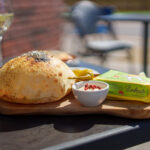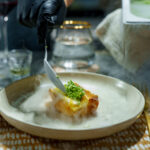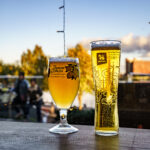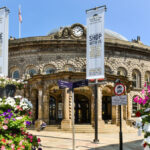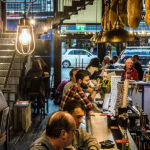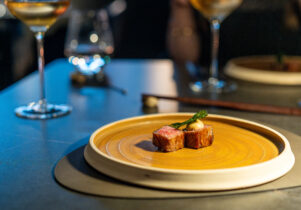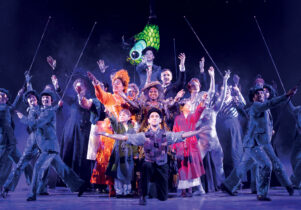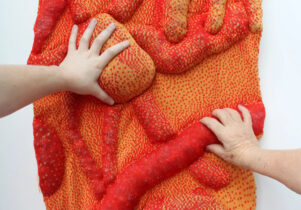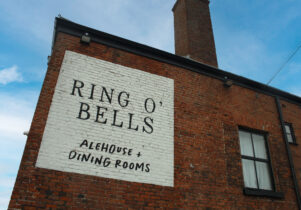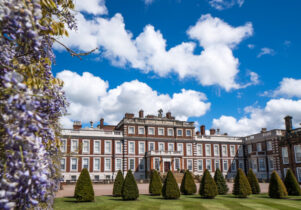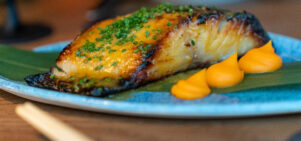Moor Hall
Ian Jones, Food and Drink EditorVisit now
Moor Hall
- Monday12:00pm - 9:30pm
- Tuesday12:00pm - 9:30pm
- Wednesday12:00pm - 9:30pm
- Thursday12:00pm - 9:30pm
- Friday12:00pm - 9:30pm
- Saturday12:00pm - 9:30pm
- Sunday12:00pm - 9:30pm
Always double check opening hours with the venue before making a special visit.
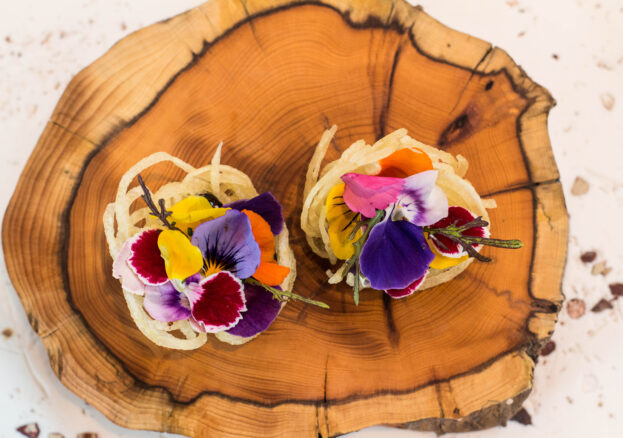
Ormskirk is a small market town, a few miles from its noisy neighbours Wigan, St Helens and Southport. While pockets of West Lancashire are easy on the eye, with rolling countryside and ancient churches, it hasn’t been known as a culinary destination. Until now.
Moor Hall is the brainchild of Mark Birchall, former executive chef of one of the UK’s best restaurants, L’Enclume. This grade II listed manor house has been converted into a beautifully modern restaurant and hotel, retaining and reworking many of the original elements in ever-more enchanting ways. Table decorations turn out to be rich in history, repurposed from pre-restoration features of this 16th-century building.
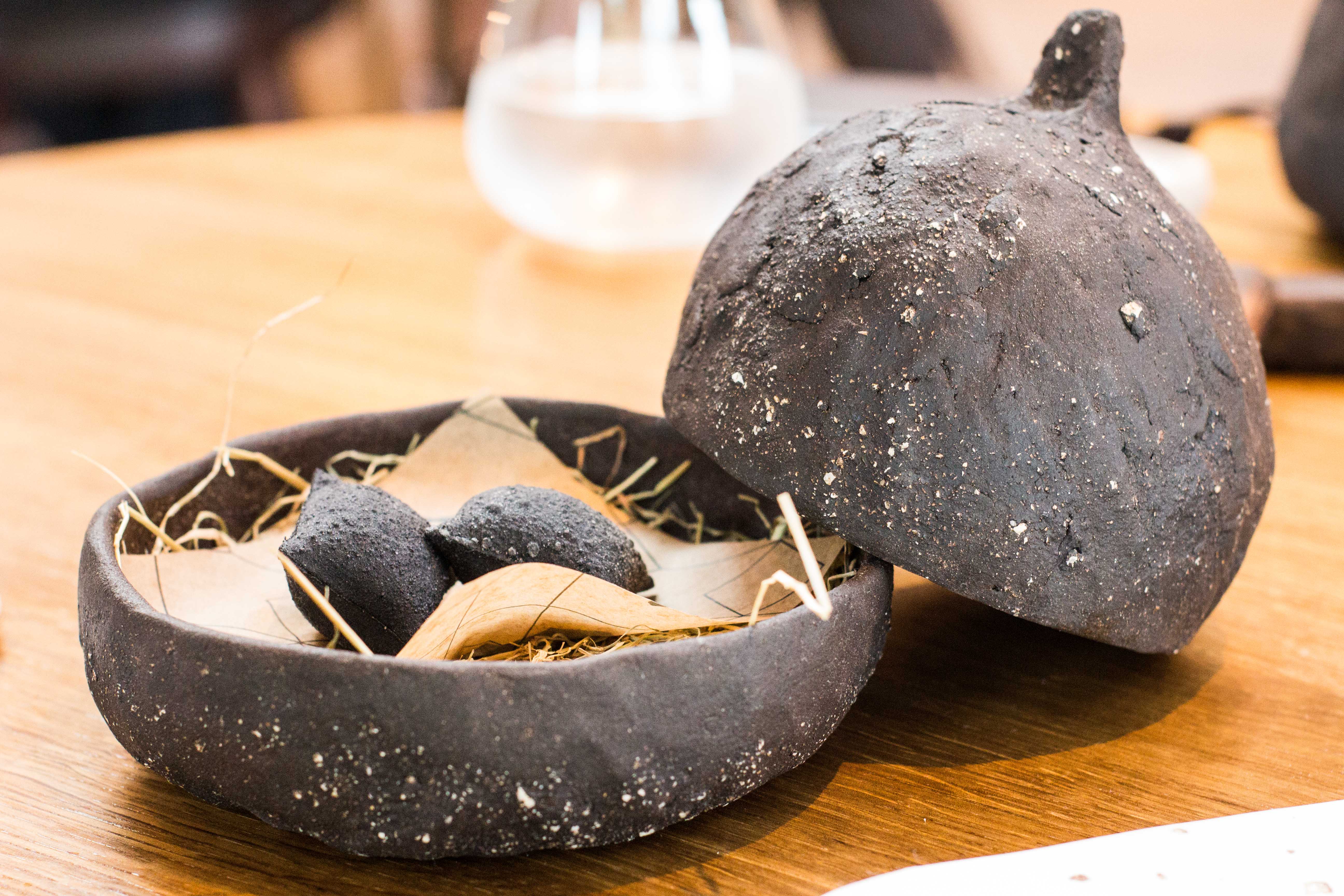
The eight-course tasting menu is what’s on offer, but don’t be fooled – including all the extra little touches (appetisers, palate cleansers, pre-course dishes) it’s easily double that. The staff are wonderfully relaxed, cheerful and charming – quietly confident that they’re about to introduce you to some of the best food and drink you’ll ever try.
Upon entry, we’re seated in a stately sitting room, all boarding school, mahogany leather and roaring fireplaces. A non-alcoholic Elderflower, apple and marigold tonic opens proceedings, along with a swirl of silky, salty cured ham. The restaurant proper is a pleasing contrast, bright and cool, with floor-to-ceiling windows and a relaxed open-plan kitchen.
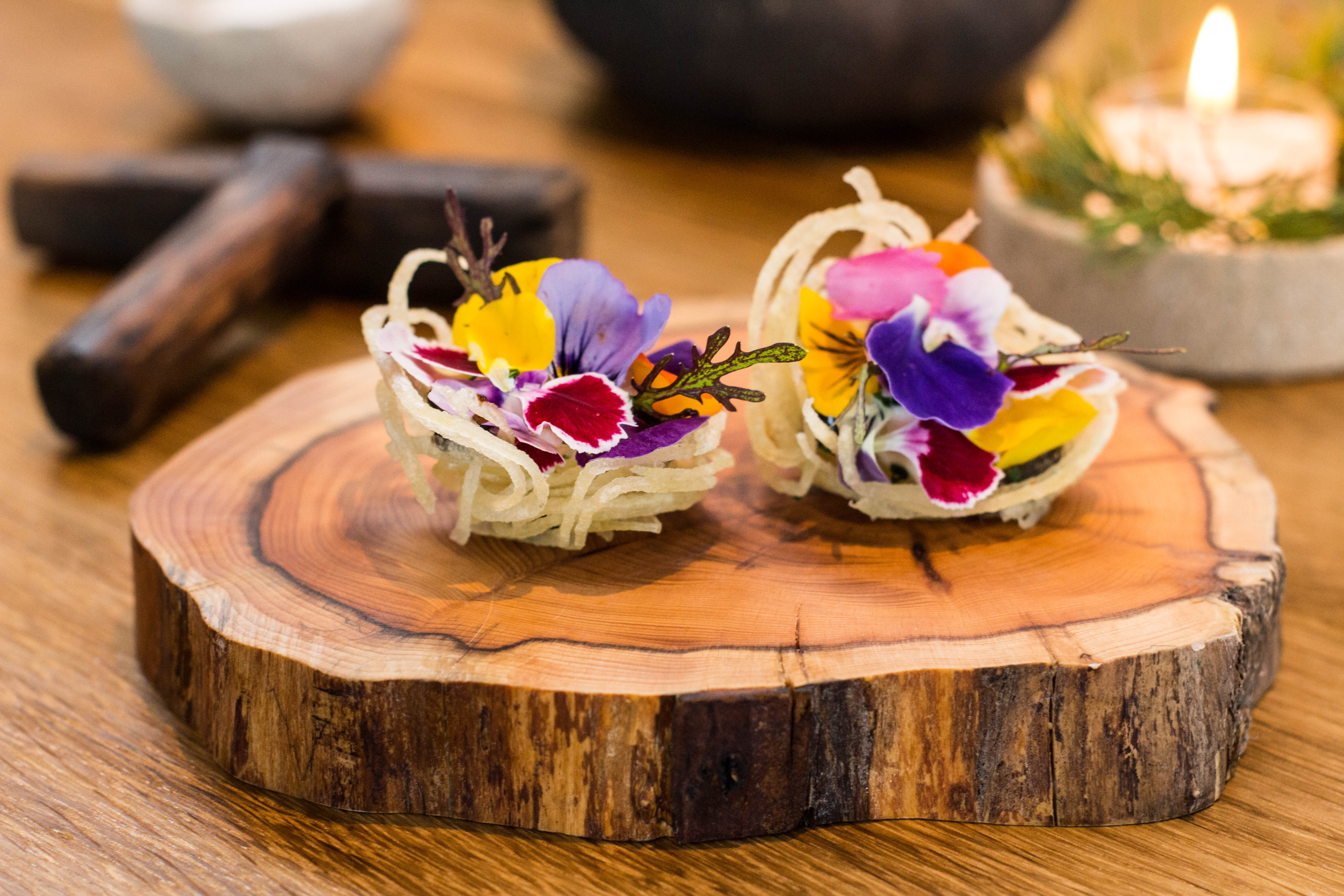
Before we reach the first course, we’re presented with four unannounced starters, each exquisite in their own way. First, two miniature granite-grey parcels packed with a delicate blend of black pudding and pickled apple, tastefully presented in a hay-filled stone holder. This is quickly followed by the prettiest dish I’ve ever eaten. Smoked curd in a fragile potato nest and topped with vivid primary colour flower petals, all placed on a smooth wedge of tree trunk. It looks like Japanese art and tastes better than such prettiness should allow. It offers a wealth of textures, crisp, crunchy and glossy, all supporting the gentle core flavours.
Bizarre and brilliant, both amusing and mouthwatering
The mackerel tartare is a sharp contrast. Deliciously tart with paper-thin sliced radishes and sea herbs such as nasturtium and purslane. Then, most striking of all, a stone bowl holding a fresh oyster, buttermilk and what’s described as ‘dill snow’, a kind of herbal slush puppy. It’s a bizarre and brilliant medley, both amusing and mouthwatering.
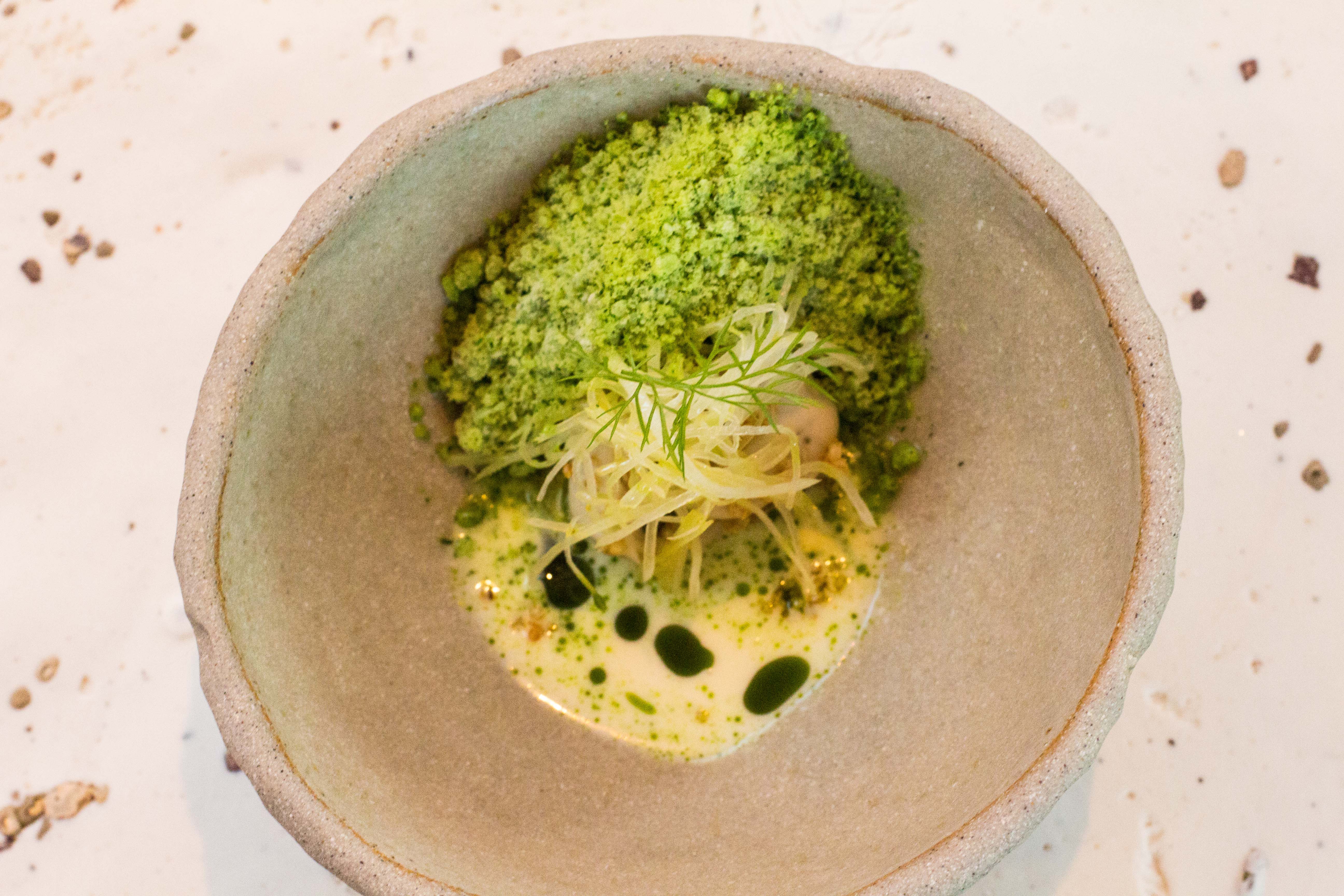
By this point, it’s an hour in and the first course proper hasn’t even been served. This isn’t a grumble – far from it. We’ve been hit with some extraordinary treats, thrilling all the senses. After some home-baked sourdough bread and subtle, tangy cultured butter, it’s time for the first dish on the menu: baked carrots in that age-old superfood, sea buckthorn juice, finished off with a snowy sprinkling of Doddington cheese. It sets out Moor Hall’s stall perfectly: simple and unfussy, with subtle flourishes you won’t find anywhere else.
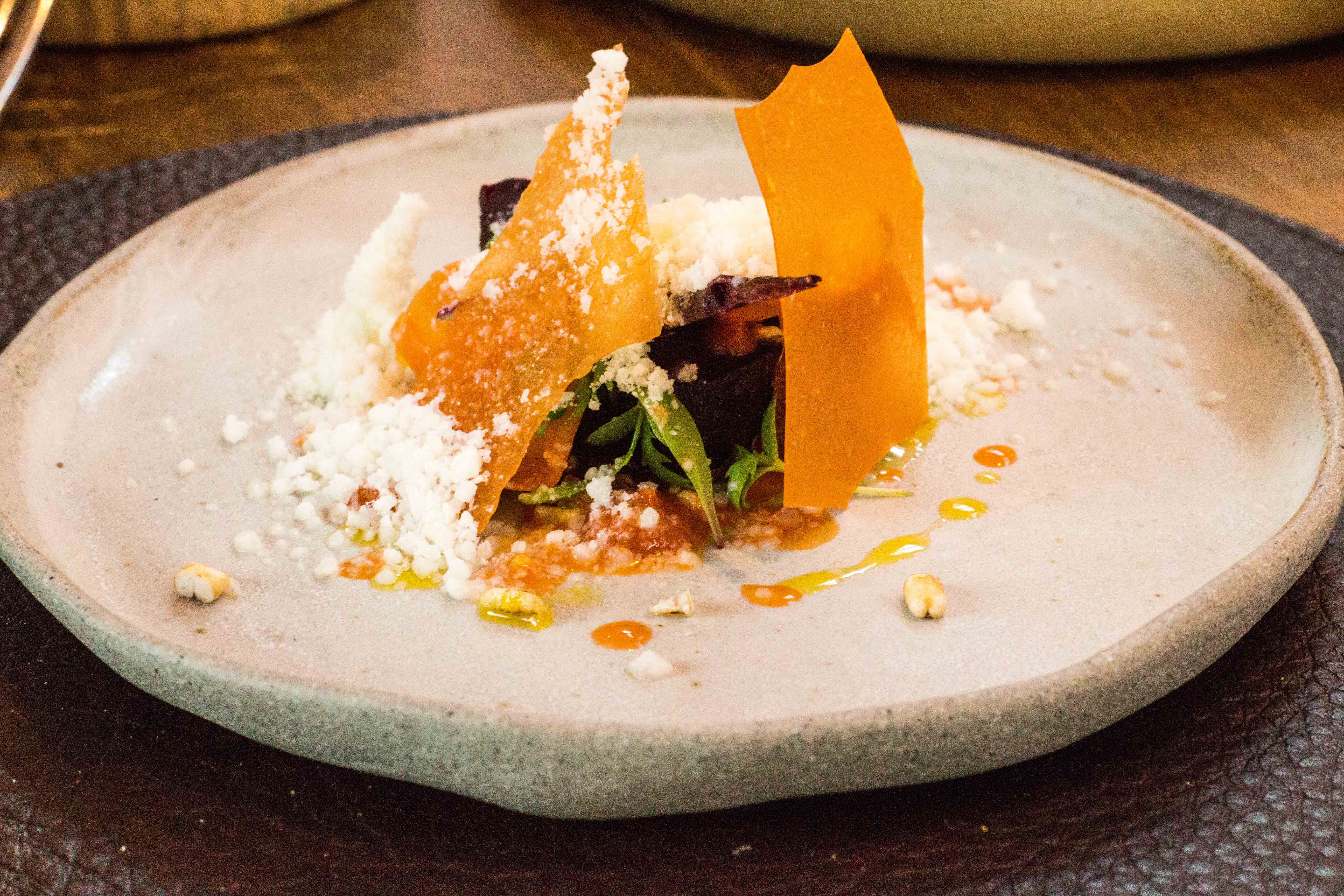
It goes without saying, the wine pairing is a must. Not just for the enthralling picture painted by the sommelier – a man with such depth of knowledge and infectious love for fermented grapes he was likely weaned on Rioja – but for the sheer alchemy involved. Each wildly-different glass doesn’t merely complement the food but manages to bring out all manner of different notes and memories. (If you’re driving, don’t miss out, book one of the seven guest rooms and stay the night.)
The sommelier is a man with such love of fermented grapes he was likely weaned on Rioja
The crab dish is a gentle umami-rich follow-up. White and brown crab meat, with asparagus tips and sunflower seeds, coated in a thin-but-flavourful turnip broth. The slender strips of asparagus are an ideal pair to the meaty seafood, and the broth lifts the dish to the new heights.
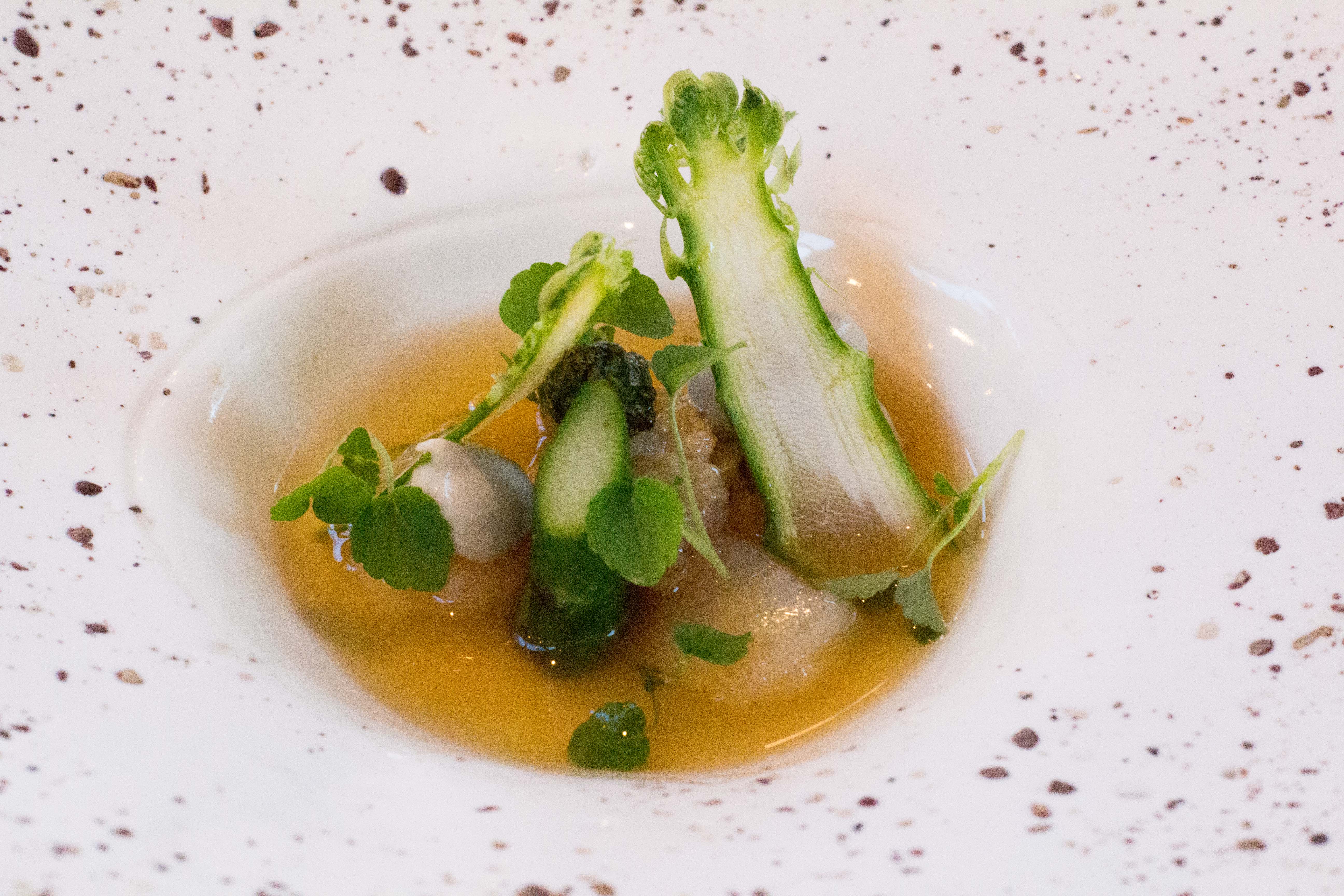
Next, Birchall’s signature dish and one that anyone who has dined at a Simon Rogan restaurant might recognise: 60 day aged beef in charcoal. This can be found in various forms across Rogan’s restaurants, past and present, said to be inspired by a similar dish at the Spain’s three Michelin-starred El Celler de Can Roca (where, tellingly, Birchall once worked). This is arguably its finest iteration, delivering remarkable differences in taste with each mouthful. It’s a glorious, brightly-coloured three-dimensional work of art, dots of neon yellow mustard, fishnet-black barbequed celeriac and those wonderful little cubes of raw beef. It’s world-class as it is, but a mouthful with the included crumbs of chocolate transform it into something other-worldly.
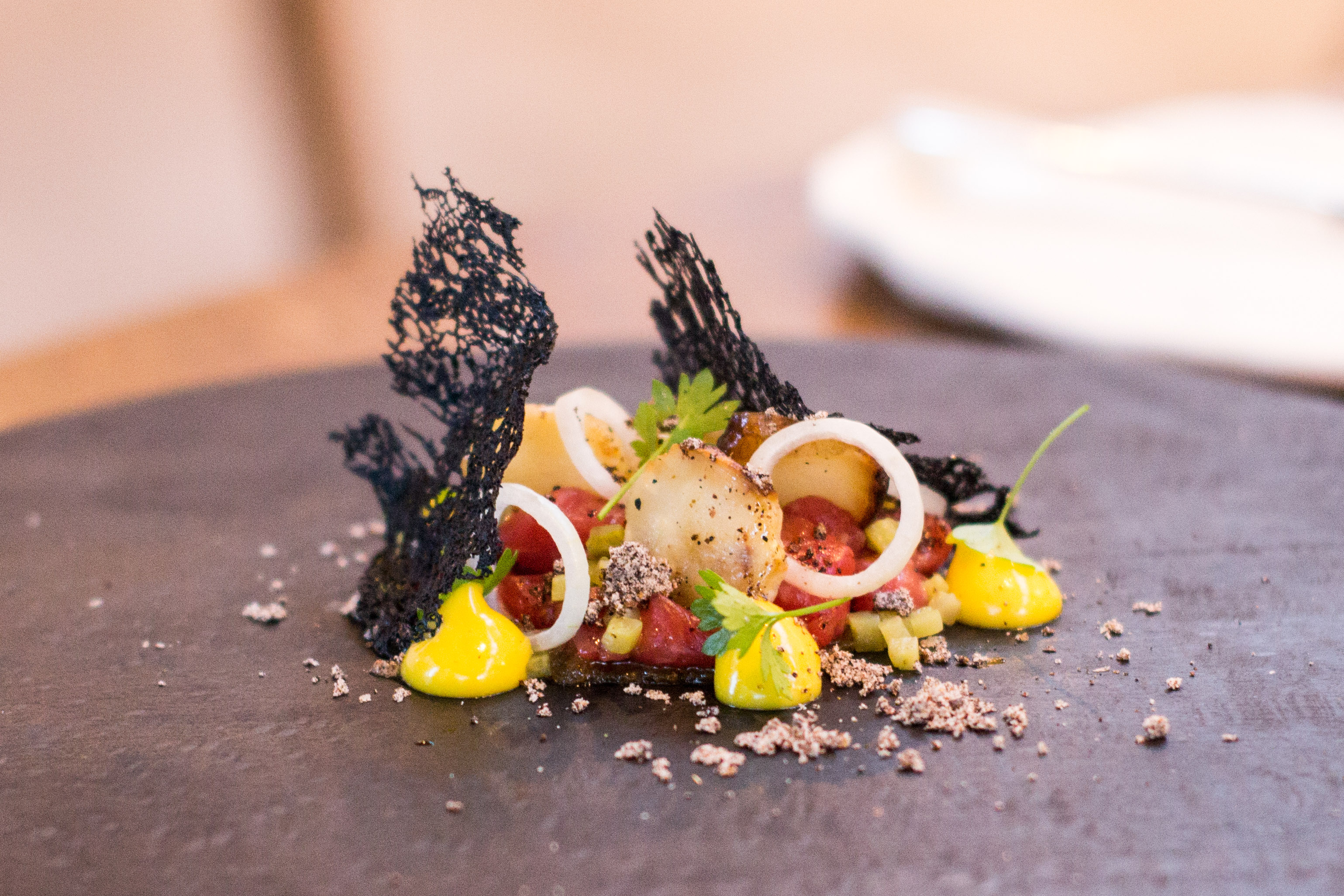
Something so bold has to be followed by something more fragrant and the grilled scallop doesn’t disappoint. Salty and soft, gently charred on top, pushed up against a mildly seasoned cauliflower floret and a scoop of softy-simmered grains. Then we’re onto the poached turbot and mussels. The soft sea vegetables and salsify come covered in a cream mussel and garlic foam, with an overriding feeling of freshness.
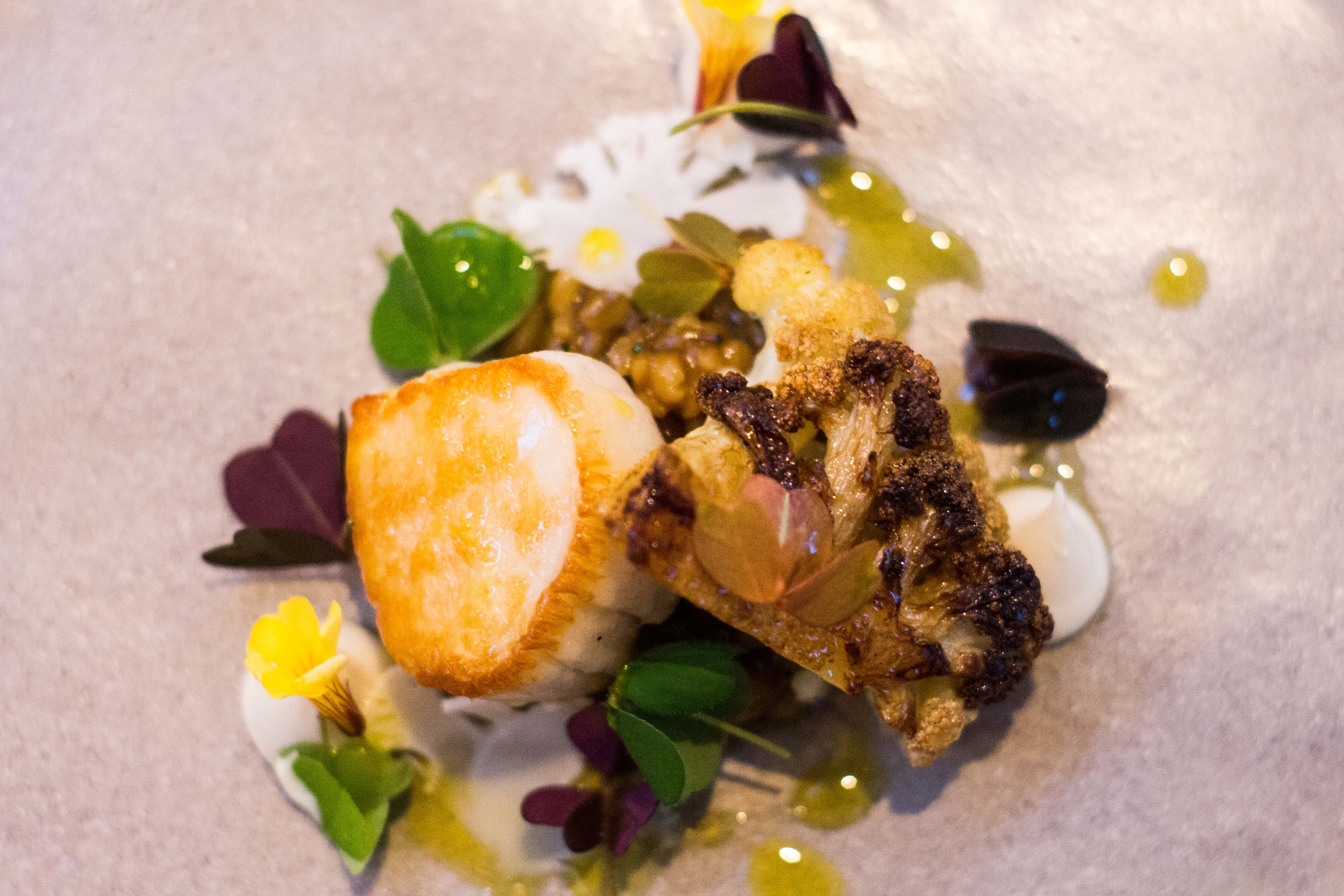
Yet more surprises are in store before the main courses. First, a plate of puff pastry-style onion bread, then appetisers to warm up for the main event. Depending on your choice of main, you’ll be able to sample either chicken leg and skin suspended in a mellow offal ragout, or lamb tongue, potato and spinach in a Baron Bigod cheese sauce to set the scene for Herdwick lamb loin.
Despite being titled mains, they aren’t markedly larger than the other courses, thankfully. A thick slab of mouthwatering Westmorland chicken, with that all important crispy skin, paired with kale cooked in ham, whey cream and the marvellously-named hen-of-the-woods mushroom. The lamb course is slightly more dramatic, all dashes of colour and abstract swoops, but both are perfect, impossible to choose between. My advice? Don’t miss out – take a guest and agree to share.
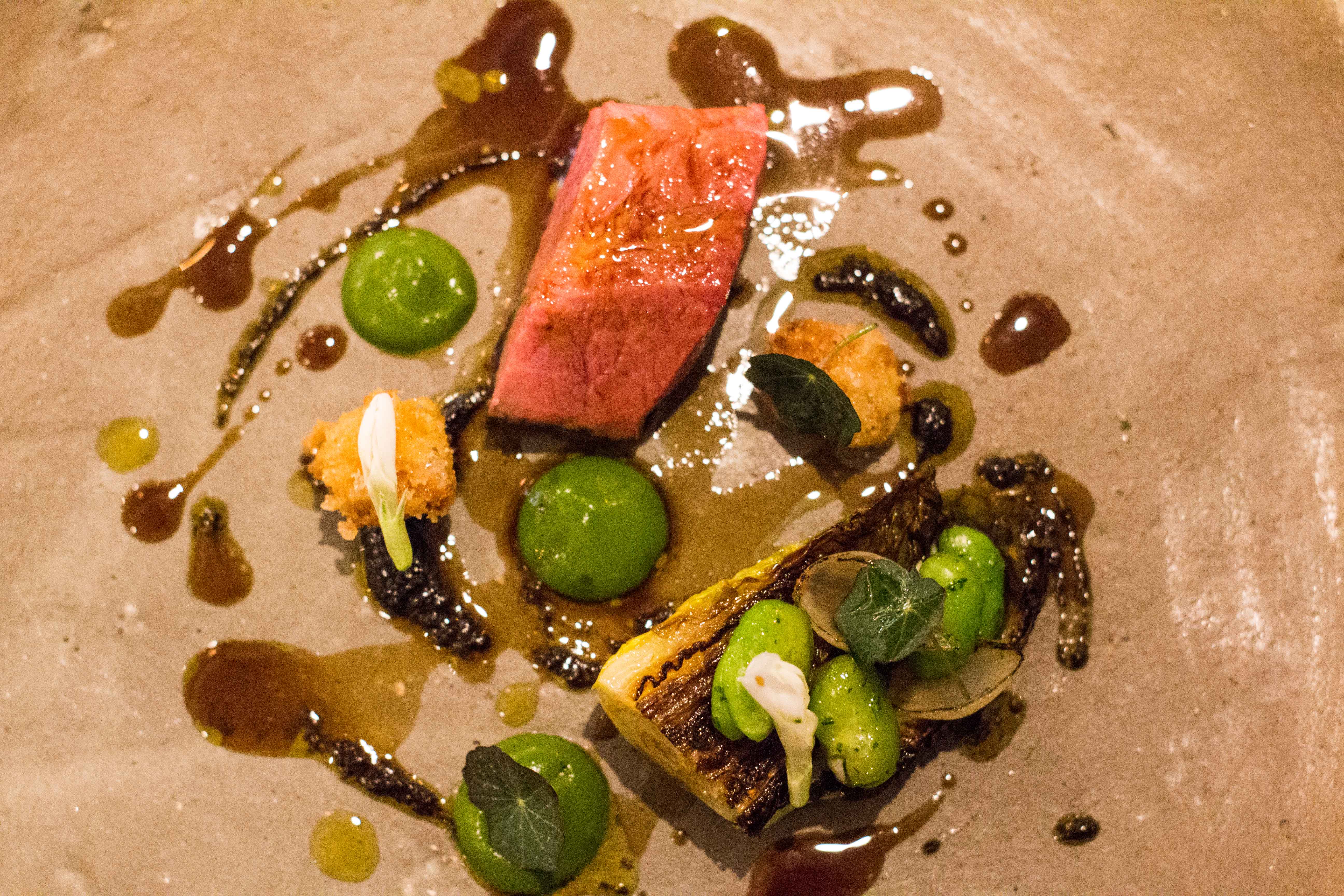
Ormskirk is famed for its gingerbread, and as such, the pre-dessert is a ginger-based palate cleanser. A rustic wooden bowl full of stem ginger ice cream, candied parsnip and brown sugar wafers. It slices through the previous patchwork of savoury flavours, setting the scene for the upcoming sweet courses.
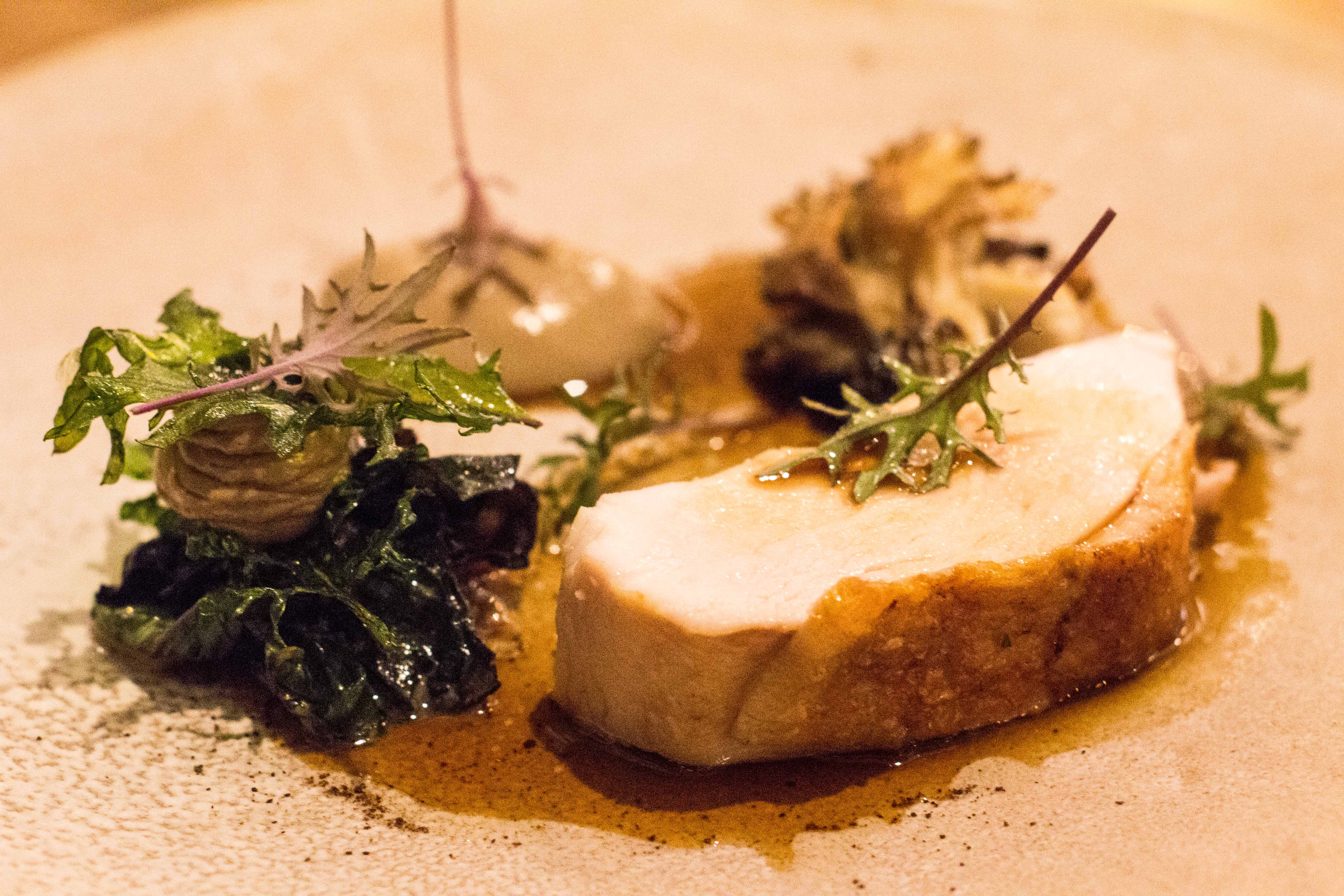
The first of which is far and away the most remarkable desserts I’ve had the pleasure of trying. Macerated unripe strawberries, served with cream cheese ice cream and strips of yoghurt meringue. The entire bowl is eye-poppingly good. The light green strawberries lack the harsh kick of their redder relatives, with a lazy gentle mouthfeel. The yoghurt meringue is no less than a revelation – replacing the dusty, glassy consistency of bog-standard meringue with a soft, instantly-liquefying texture that blends impossibly well with the creamy fruit flavours. It puts Eton Mess to shame.
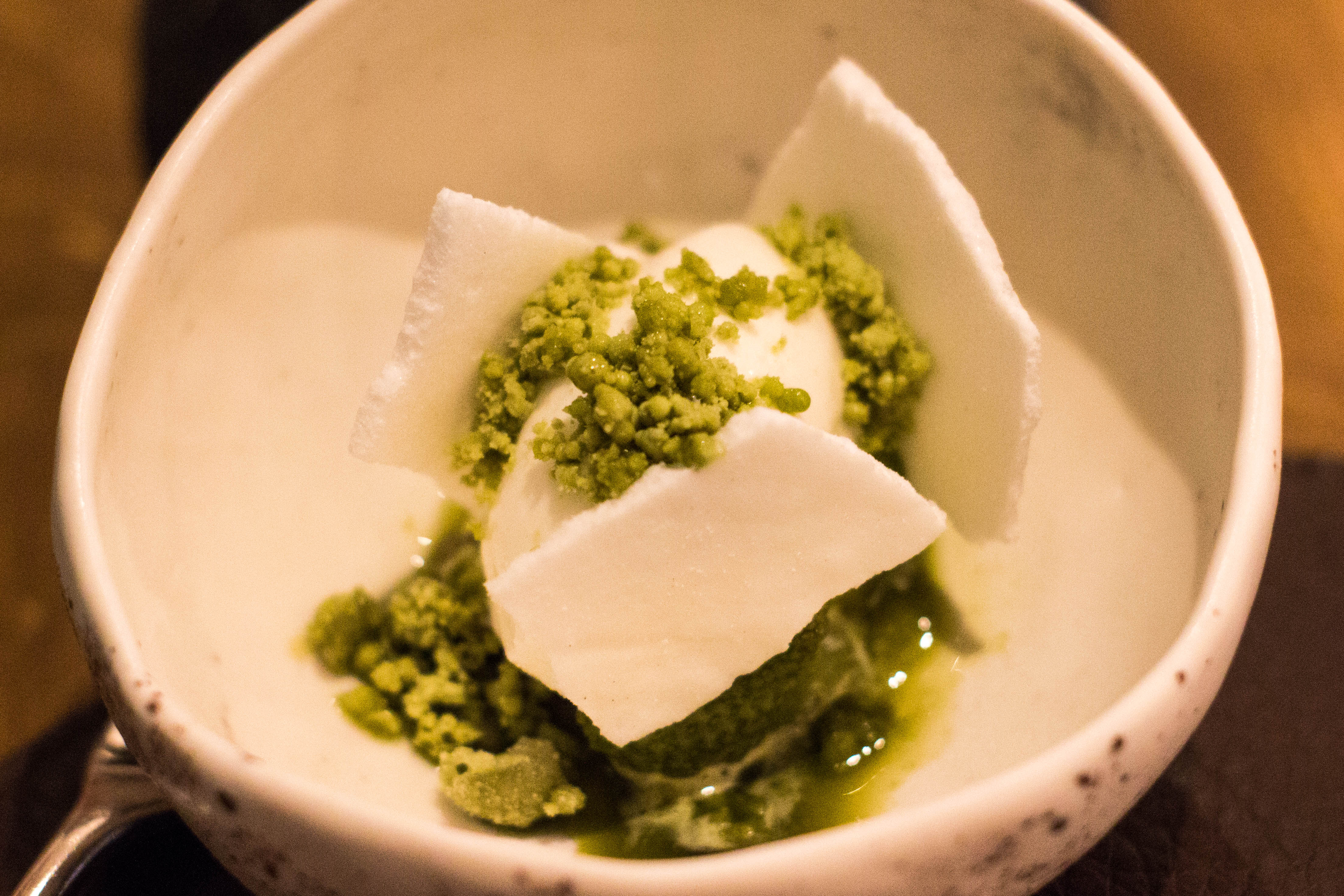
The honey beer dessert finishes the meal. Baked Bramley apple terrine holding a pastry basket filled with marigold sorbet and honey beer ‘popcorn’ rocks, with blobs of apple purée also infused with marigold (neatly referencing the opening aperitif). Again, it’s an incredible dessert and judging by comments from the waiting staff, a clear favourite of everyone involved at Moor Hall.
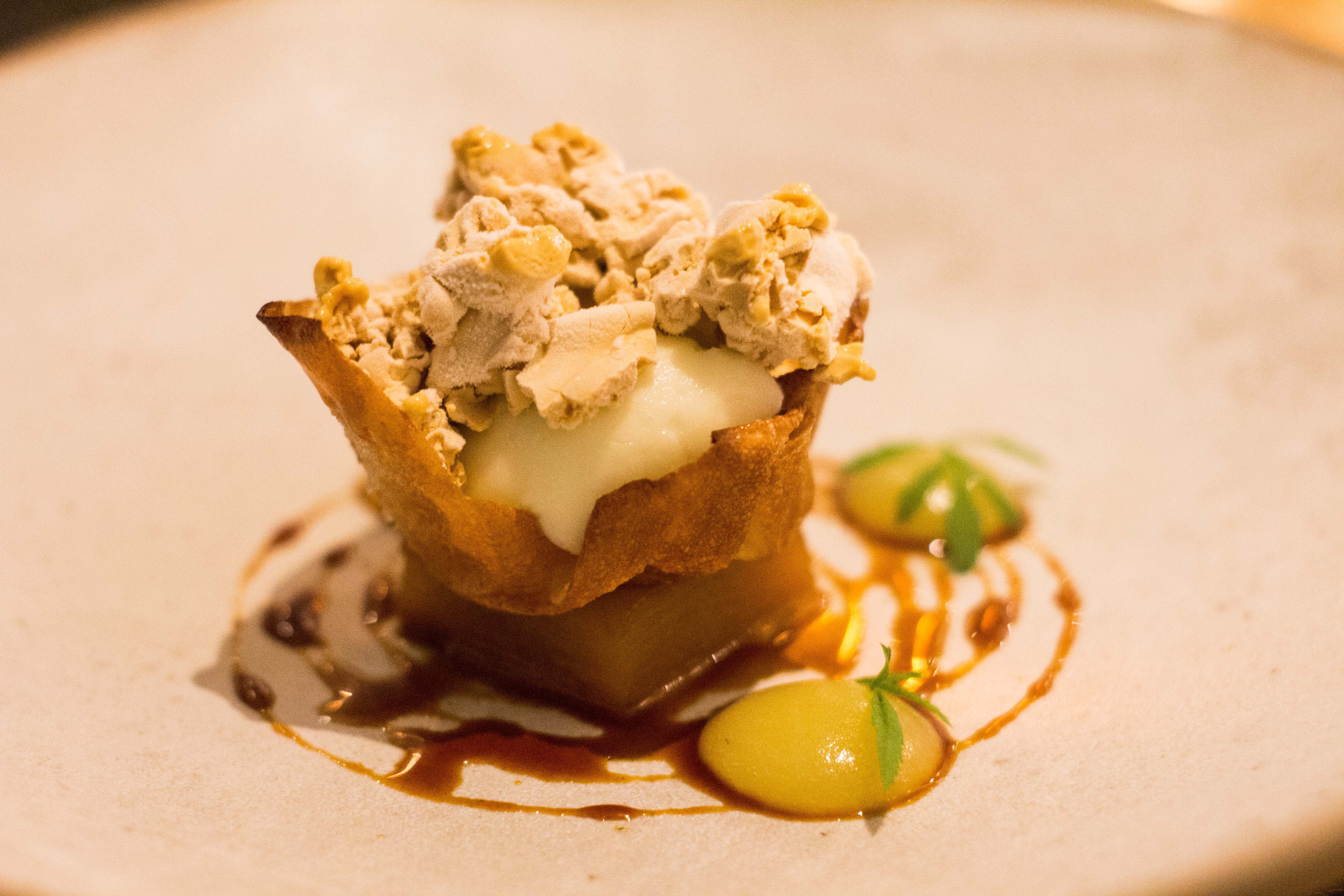
L’Enclume may hold the unofficial title of the North’s finest restaurant at the moment, but not only does Moor Hall more than match up in the food stakes, it also boasts a richer, more fascinating history. At time of writing the restaurant has only been open a couple of months – it’s unheard of for a new restaurant to reach such heights at such an early stage. When the time comes for Michelin stars to be doled out, it’s not a question of if, it’s a question of how many.






